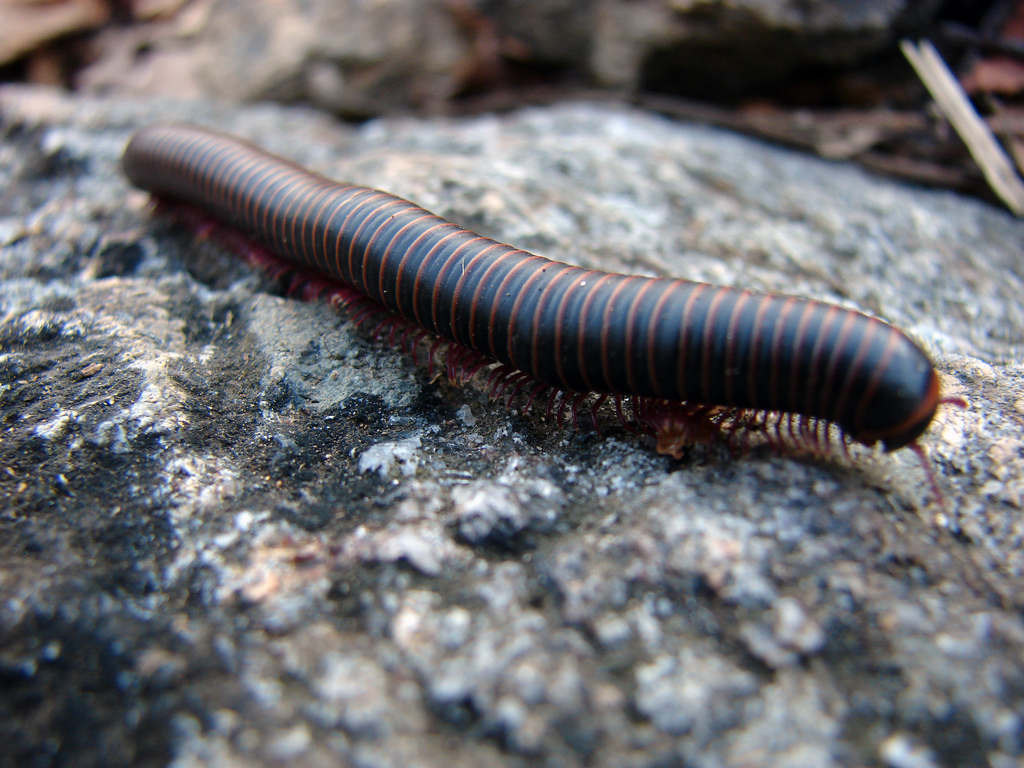Centipedes and Millipedes
What they do: Millipedes and centipedes are more closely related to marine animals than insects, but they are found on land in moist habitats or areas with high humidity. Nocturnal creatures, they are not disease vectors. Millipedes are wormlike with 1,000 legs whose body segments each carry two pairs of legs. Centipedes have 100 legs and each body segment bears one pair of legs.
Millipedes are not poisonous creatures, but they can produce irritating fluids from their glands that may cause allergic reactions in some people. Centipedes have poisonous glands right behind their head. If a human is bitten, the poison usually only causes a moderate reaction similar to that of a bee sting. People who are allergic may suffer more serious reactions.
What to do: To avoid contact from these animals, avoid handling them and remove any objects that could provide a hiding place for them outside the home. To secure your house, make sure the doors and windows are tightly shut and seal any cracks or crevices. Pesticide can be applied outdoors to kill the animals. To treat a centipede bite, wash the area with soap and water, apply ice or wet towels, and take analgesics for the pain.





